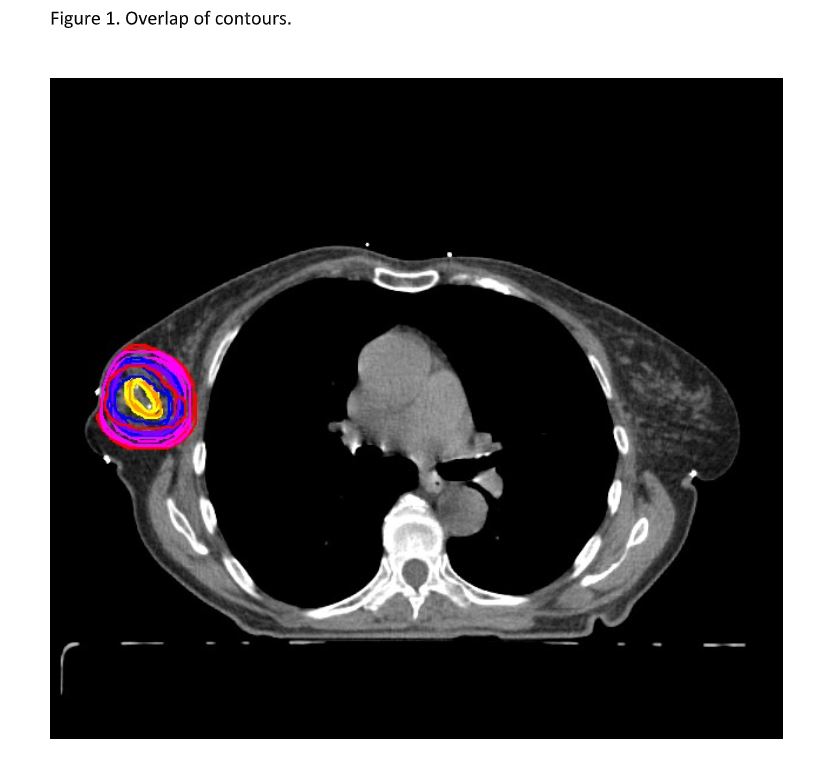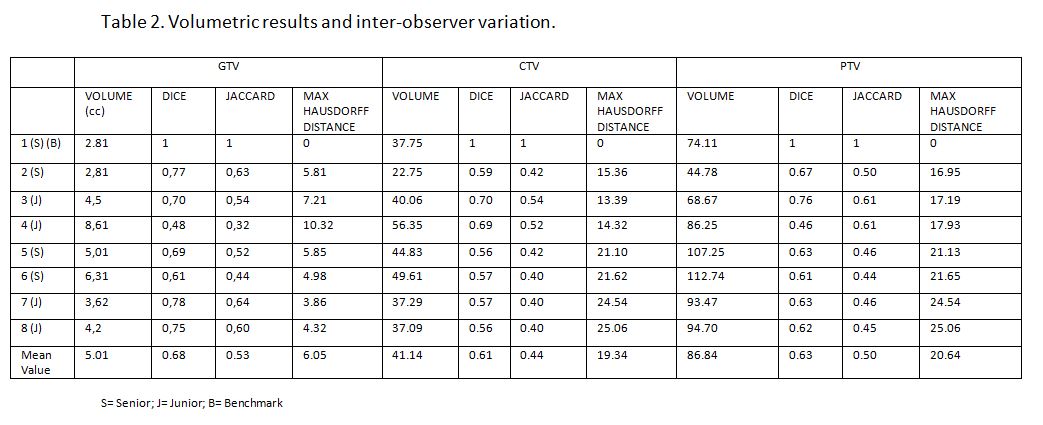Interobserver variability of target volumes in Accelerated Partial Breast Irradiation
PO-2301
Abstract
Interobserver variability of target volumes in Accelerated Partial Breast Irradiation
Authors: Marzia Borgia1, Marco Lucarelli1, Marianna Nuzzo1, Lucia Anna Ursini1, Luciana Caravatta1, Antonietta Augurio1, Monica Di Tommaso1, Davide Raspanti2, Cynthia Aristei3, Isabella Palumbo3, Elisabetta Perrucci3, Laura Di Lena3, Anna Giulia Becchetti3, Domenico Genovesi1
1"SS Annunziata" Hospital, "G. D'Annunzio" University, Radiation Oncology Unit, Chieti, Italy; 2Tema Sinergie Inc., Tema Sinergie Inc., Faenza, Italy; 3University of Perugia, Perugia General Hospital, Radiation Oncology Section, Department of Surgical and Biomedical Science, Perugia, Italy
Show Affiliations
Hide Affiliations
Purpose or Objective
Accelerated partial breast irradiation (APBI) can be considered an alternative to whole breast irradiation (WBI) according to clinical stage and biological characteristics, with the advantage of a shorter overall treatmenttime and reduced adverse events and cost. Nevertheless, an accurate delineation target volumes for APBI represents a challenge for Radiation Oncologist. Indeed, some studies showed an interobserver variability due to the anatomic definition of the tumor bed. This suggests the need to promove shared criteria for uniformity in the tumor bed delineation. The aim of this study is to evaluate the interobserver variability in target volumes delineation in a breast cancer (BC) patient who has undergone breast-conserving surgery and was candidate to receive APBI.
Material and Methods
We retrospectively analyzed a right-sided BC patient (pT1c, pN0, Luminal-A) treated with surgery. Five surgical clips were placed during surgery to indicate tumor bed. Planning CT scan simulation (in slices 5 mm thick) was obtained with patient in a supine position, with both arms raised above their head, using a breast board. Target volumes were represented by Gross Tumor Volume (GTV, corresponding to the tumor bed), Clinical Target Volume (CTV) and Planning Target Volume (PTV). Target volumes delineation was perfomed by 4 Senior Radiation Oncologists and 4 Radiation Oncology young Residents, with practice in clinical dosimetry, of two different Radiation Centers. The DICE index was used as a statistical validation metric to evaluate the spatial overlap accuracy of the different volumes delineations, comparing the contoured volumes with the benchmark. The value of a DICE is a scalar coefficient ranges with a value: 0 indicating no spatial overlap; 0 to 1 with steps of 0.2 indicating slight, fair, moderate, substantial and almost perfect agreement. The similarity and diversity of sample sets was evaluate using the Jaccard index, defined as the of the intersection divided by the of the union of the sample sets. The Max Hausdorff Distance was used to measure how far two subset of a metric space are from each other; it is defined the greatest of all the distances from a point in one set to the closest point in the other set.
Results
The overlap of contours is reported in Figure 1. Volumetric results and interobserver variation were reported in Table 2. The mean volume values resulted 5.01 cc, 41.14 cc and 86.84 cc for GTV, CTV and PTV respectively. A moderate agreement was achieved, in particular for DICE values resulting in 0.68, 0.61 and 0.63 for GTV, CTV and PTV respectively.


Conclusion
Although the limited number of observers, an acceptable agreement between participants was obtained in target volume delineation, in particular for GTV definition. The minor agreement regarding CTV and PTV could be related to a variability dependent on greater adherence to internal protocols.